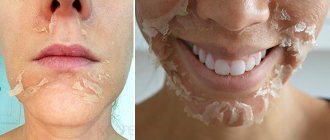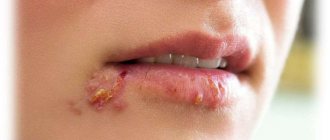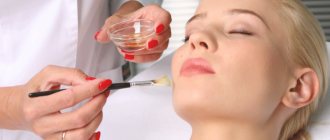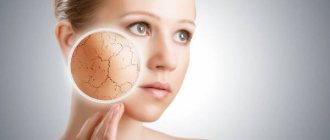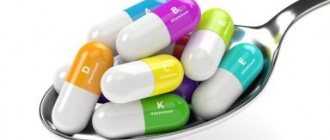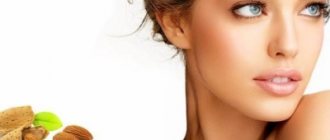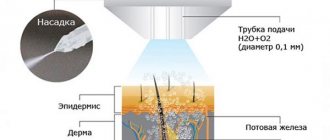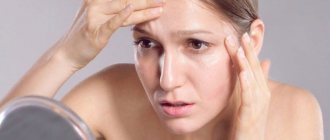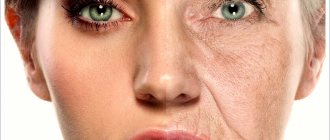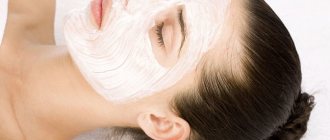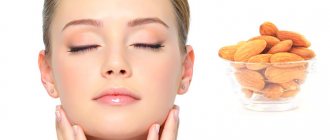- 7742
- 0
Peeling is a procedure that affects the skin of the face, with its help the skin is cleansed by exfoliating dead cells.
At home, you can do facial peeling yourself without wasting money on expensive beauty salons, after which, judging by the reviews, the desired result is often not achieved. Peeling at home will not only be cheaper, but also more effective than cosmetologists and will help you say goodbye to problem skin.
How to care for your skin after peeling
The process of cleansing the skin with peeling consists of several stages.
First, it is important to properly prepare your face for the procedure. All actions should be performed carefully so as not to injure the skin. It is best to do peeling in the evening, then by morning the epidermis can recover. It is not recommended to carry out a deep cleansing procedure in the spring and summer. The best time for peeling is winter, when there is very little sun, and the risk of negative effects of ultraviolet radiation on the skin is minimal.
Regardless of the method chosen, the skin should be thoroughly cleansed before the procedure. To do this, follow these steps:
- Remove makeup using milk or micellar water.
- Wash your face with foam or gel.
- If you choose a scrub, gommage or film mask, it is advisable to steam your face before peeling. You can steam herbs: chamomile, mint, plantain.
- Before using an acid peel, start using a cream with acids two weeks in advance so that the skin adapts to this effect and endures the procedure without stress.
15 minutes before a chemical acid peel, be sure to check the reaction on the elbow. If irritation does not follow, cleanse the skin with an acidic toner and only then proceed with applying cream or gel.
Rules
For a good effect and to avoid injury to the skin, depending on the chosen method, follow the following recommendations:
- Apply the scrub to damp skin. Gently and carefully massage areas of the face, avoiding the areas around the eyes and lips.
- Apply the film mask only to dry skin. After 10-15 minutes, remove it from bottom to top. Wash off any remaining residue with a damp sponge.
- After application, leave the gommage for about 15 minutes and roll the dried crust with your fingertips. If there is inflammation on your face, simply rinse off the product with warm water.
- Apply products containing acids with a synthetic brush. Lubricate the eyelids, area around the lips and eyes with a rich eye cream before applying. After the time specified in the instructions has passed, use a neutralizer to stop the action of the acids. After the procedure, apply a soothing mask and moisturizer.
For each client, the composition is selected individually by a cosmetologist who conducted the examination. The skin is tested for the active substance. 2 days before the procedure, the consultant may prescribe antiviral medications and advise you to stop taking certain medications.
The more intense the penetration of acid into the layers of the skin, the more the skin needs preparation.
In 2 weeks:
- refuse to visit swimming pools and saunas;
- Avoid exposure to sunlight and artificial rays (solarium);
- use creams with protection of at least 30 SPF;
- exclude scrubs, peelings, microdermabrasion, use fruit peels only for their intended purpose;
- The consultant may prescribe the use of lotions with glycogel acid or cream with retinoids.
It's not worth it in a week:
- perform wax or laser hair removal;
- do Botox or collagen injections;
- chemical manipulations with hair: dyeing, curling, hair straightening.
Facial peels are stressful. Interaction with acids is especially hard on the skin, so to mitigate the effects, you need to follow some rules to ensure maximum protection. For the first 12 hours, the following is prohibited:
- wash;
- touch the face;
- mow means;
- visit the street.
Within 2 weeks:
- give up decorative cosmetics and scrubs;
- for the first 3 days, use only light foams and gels, then products on the advice of a cosmetologist with anti-inflammatory, tonic and moisturizing properties;
- do not touch the skin;
- Do not remove the formed crusts until they fall off;
- refuse baths, steam rooms, saunas, sports activities;
- For the first 3 days, limit your visits to the street; after 3 days, when leaving the house, use creams with an SPF filter.
Predictable complications are planned temporary phenomena that do not harm the body and disappear on their own after a certain time.
- Swelling.
- Redness.
- Peeling.
- Crust formation.
- Moderate inflow of arterial or outflow of venous blood.
Unpredictable complications that occur after the procedure are characterized by negative effects; some consequences may require medical intervention.
- Allergic reaction.
- Dermatosis with red-yellow nodular papules.
- Marbling is the outline of blood vessels on the surface of the body in a pale red color.
- Worsening of acne.
- The border of the treated area is clearly marked.
- Tissue compaction and scar formation.
- Wen formation.
- Hyperpigmentation.
Pay attention to facial peels with acids if you have skin problems. Solutions act in different ways, from a light effect to deep penetration into the deep layers of the dermis.
Facial peeling with acids: before and after photos.
You can always choose a solution individually for each skin type; for this it is better to contact professionals in a beauty salon. You can resort to folk recipes, essentially these are the same masks that our mothers and grandmothers made.
Acids are known for their ability to literally “burn” the epidermis, so certified cosmetologists are trained to control the depth of skin changes during the procedure. To do this, they simply select a composition with the required concentration of acids and its exposure time. But when carrying out home procedures, ordinary women will not be able to do this, so they only carry out the so-called superficial peeling.
This procedure affects only the epidermis and can be used both at home and in salons. To achieve a good result, you will have to carry out a course of procedures once a week for one and a half months. This peeling is aimed at rejuvenating the epidermis, eliminating the effects of photoaging, and helping to achieve a more uniform complexion. You can find out about biorevitalization with hyaluronic acid here.
There are also medium and deep peels that affect the middle layers of the dermis. The procedure is quite painful, so it is performed under local anesthesia. Medium peeling helps eliminate significant age spots, fights actinic keratoses and photoaging, reduces or removes acne scars, and makes wrinkles less pronounced. Deep peeling acts on the lower layers of the dermis and eliminates scars, scars, and wrinkles.
In home care, it is allowed to use products based on alpha and beta hydroxy acids, which are intended specifically for surface action. AHA acids are obtained from apples, citrus fruits, sugar cane, willow bark, etc. The most famous is glycolic, but lactic, citric, and tartaric acids are also popular. This type of peeling is indicated for women with dry and normal skin.
Among beta hydroxy acids, salicylic acid is the most popular. This type of acid has a more pronounced effect due to deep penetration into the pores. Thus, it is possible to use lower concentration formulations, thereby reducing the likelihood of complications.
We suggest that you familiarize yourself with which doctor to contact for furunculosis of different localizations. Furuncle which doctor should I see?
When carrying out peeling at home, first of all, you should choose the right composition, focusing on your skin type, expressed problems, as well as the expected result. Before the procedure, you need to prepare the skin - wash and apply a scrub. The day before, it is necessary to conduct a skin sensitivity test by applying a small amount of the composition to the bend of the elbow for 1 minute.
To prevent burns to the mucous membranes and other sensitive areas, it is recommended to treat the nostrils, lips, eyelids and eyebrows with regular Vaseline before peeling. After this, you can apply the selected product, following the instructions in the instructions for use.
After this rather aggressive procedure, you need to properly care for your face: wash only with very mild products, moisturize the skin well at least 2 times a day, avoid exposure to active sunlight for a month, use a day cream with SPF protection of at least 50. If signs of infection of the epidermis or age spots occur, you should immediately seek qualified help.
All these precautions will help make the peeling procedure safe; it will become an essential element of regular self-care, which will help maintain the beauty and youth of the skin. We also recommend that you familiarize yourself with milk peeling in this material.
Most superficial fruit peels can be performed at home; you just need to choose the right proportions and ingredients for the acid to fully manifest itself. Below are the most popular recipes for homemade fruit peels using various acids.
Wine
Wine peeling:
- reduces age-related skin changes and signs of aging when exposed to ultraviolet radiation;
- reduces secretions of the sebaceous glands;
- weakens pigmentation;
- eliminates pathological thickening of the stratum corneum of the skin.
After peeling, you must follow a few simple rules to consolidate the effect of the procedure and to avoid negative consequences.
- First of all, you need to remember that after such manipulation the skin becomes more vulnerable to ultraviolet rays, so the use of creams with SPF protection of at least 30 units is mandatory. Otherwise, there is a risk of pigmentation appearing on the face.
- In addition, it is necessary to regularly use a moisturizer, since skin damaged by peeling is prone to rapid loss of moisture.
- It would be a good idea to take vitamins E and C, which additionally protect the skin from ultraviolet radiation due to their antioxidant properties.
- We should not forget that to achieve maximum effect, such manipulations should be carried out in a course of 5–10 procedures, but not more often than once every 7–10 days. Those with dry and normal skin can reduce the frequency of fruit peeling to once every 2 weeks.
Important! In addition to caring for your skin after the procedure, you also need to know how to properly prepare for peeling.
Who is suitable for chemical peeling?
Let's talk about contraindications and indications for chemical peeling. Anti-aging procedures of this type are suitable for different age groups and allow women with any skin type to get equally lasting effects.
A properly selected and high-quality chemical peeling procedure solves the following problems:
- photoaging of facial skin due to prolonged contact with sunlight;
- pigment spots and uneven complexion;
- keratosis in older age groups;
- acne and acne scars;
- excessive dryness, roughness of the skin and other problems associated with its texture.
In addition, chemical peeling is also powerless against the appearance of spider veins and enlarged pores. However, there are plenty of positive results from such a procedure.
Here is just a small list of what chemical facial peeling provides:
- exfoliation of skin;
- cell regeneration;
- moisturizing the skin;
- elimination of stretch marks and wrinkles;
- lifting;
- reduction of inflammation.
Chemical peeling is contraindicated for patients with warts and scars on the skin, excessive pigmentation of the skin, fungal and bacterial infections.
It is also not recommended to carry out such procedures for owners of dark skin, red hair and freckles.
If you have been taking isotretinoin over the past year, you should not resort to this method of rejuvenation either.
Peeling compositions
Facial peels with acids can be used at all ages.
- From adolescence, a peeling scrub is used, with low-percentage fruit acids and the addition of abrasives.
- Later, after 25 years, they switch to full acid peels. They use surface ones from non-toxic AHA acids: fruit, mandelic, glycolic in concentrations up to 20%, or trichloroacetic (TCA) starting from 1%, or salicylic up to 10%.
- Those over 35 years of age can undergo medium peels, which act deeper on the dermis. Recommended peeling methods: 20-30% salicylic acid, TCA acid 25-30%. Yellow (retinoic) peeling is suitable - a mix of retinoic acids, to which kojic, azelaic, ascorbic, and phytic are added. Another recipe for superficial-medium peeling with retinoic, salicylic and lactic acids - this “Jessner youth cocktail” is a hit with Hollywood stars.
- After 50 years, serious problems arise. Deep peeling with phenol will help reduce the degree of problems; it is carried out only in a clinical setting and requires anesthesia. Peeling is suitable only for those who have healthy hearts, kidneys, and liver.
Possible consequences of the procedures
The more complex the rejuvenation procedure, the more complications patients may experience after a chemical peel.
The consequences will also depend on the professionalism of the specialist performing the procedure, so it is important to select specialists wisely.
The least serious consequences are temporary redness and pimples after a chemical peel. On average, their disappearance period ranges from a couple of weeks to a month.
Other possible effects of chemical facial peels:
- pain when touching the treated area of skin;
- peeling and itching;
- manifestation of allergies to chemical components;
- chemical burns due to improper use or high concentrations of drugs;
- spread of bacteria and fungus, as well as other infections;
- herpes relapse;
- excessively high skin pigmentation;
- temporary or permanent lightening of some areas of dark skin (hypopigmentation);
- manifestation of spider veins;
- noticeable transitions between treated and untreated areas of the skin;
- scars (occurs quite rarely).
If superficial peeling can be done by cosmetologists, then for a moderate procedure it is better to invite a dermatologist with the appropriate education.
Deep peeling is done by a dermatologist or plastic surgeon to keep the skin as safe as possible and prevent unwanted damage.
It is also important to select a drug based on the characteristics of your skin and the whole body: only in this case will your face heal quickly after chemical peeling and will delight you with the excellent effect of the procedure.
Homemade facial peeling with fruit acid
- For 100 g of pineapple pulp, 2 tbsp is enough. honey and 1 tbsp. oat flour - apply the mixture for 10 minutes;
- To a mixture of olive and rosehip oils (2 tablespoons each), just add 10 drops of lemon juice and lubricate your facial skin with this mixture. Stand for 7 minutes;
- For 15-20 minutes, you can apply 1 mashed baked apple to your face after mixing it with 1 tsp. honey
Don't miss the most popular article in the section:
Facial massage according to the system of the Japanese doctor Asahi Zogan.
Popular peelings:
- Alpha Complex Rapid Exfoliator (Holy Land, Israel);
- Cream mask Exfoliant (Kora company, Russia);
- Fruit Peel (Aravia, Russia);
- Exfoliating peeling “Skinlite” (Skinlite, South Korea);
- Anti-aging (Cosmetolog, Russia).
The depth of penetration is small: they can only affect the stratum corneum or a little deeper. The process is painless, rarely a burning sensation. The result is smooth, brightened, soft and supple skin. Wrinkles are smoothed out, pores are tightened, and the condition of acne improves.
Salicylic peeling
Popular peelings:
- Salicylicpee 15%; 25% (MedicControlPeel, Russia);
- Salicylic Acid 20% (PeelMedical, Russia/USA);
- Salipeel S25% (Mediderma, Spain);
- Anti-acne (Algologie, France);
- SalicylicPeer15%, 25% (Martinex, Russia).
There are 2 types of peelings: superficial with 15-20% acid and superficial-middle with a 25-30% solution. It has a high level of penetration deep into the skin and actively suppresses pathology in the skin. The effect is achieved thanks to the uniqueness of salicylic acid; it completely dissolves and eliminates dead epidermis.
Professional peeling with glycolic acid at home
Only if it is absent can you begin preparation:
- For approximately two weeks prior to the procedure itself, products containing less than 10% glycolic acid should be added to skincare products.
- Before peeling, you should prepare a soda solution in advance (1 teaspoon of baking soda per 1 cup of water) to neutralize the acid mixture.
- Processing must begin from the frontal part. Carefully moving around the area around the eyes, you should move to the nose, cheeks, chin and then to the neck.
- You need to use either a cotton pad for aggressive peeling, or a brush for gentle peeling. In any case, it is imperative to achieve uniformity of the applied layer.
- It is necessary to neutralize the acid with a cotton pad soaked in a soda solution no later than indicated on the packaging of the glycolic peeling product. After which the skin needs protection with a special cream with SPF of at least 30.
A course of glycolic (35%) peeling consists of 3-6 procedures with an interval of 3-4 days; with 50% acid you can “peel” the facial skin no more than once a week and carry out no more than 6 procedures per course. Despite the fact that the procedure takes no more than half an hour, it is important to devote much more time to it - at least three days - for the post-peel rehabilitation period.
There are a number of prohibitions that apply to the day of peeling and the two subsequent days:
- washing with soap;
- using tonic;
- shaving;
- forced removal of scales formed after peeling;
- sunbathing without sunscreen.
Popular peelings:
- Light peeling with chitosan 10% (Medical Collagene 3D, Russia);
- Raspberry, Cranberry (New Line, Russia);
- Glicolik 70% (PromoItalia, Italy);
- Glycolic Gel-Peel from 30% to 70% (New Peel, Spain);
- Perfect Glycolic Peel (Cell Fusion C, South Korea).
There are 2 types: superficial (up to 40%) and superficial-medium (40-70%). Due to the small molecular weight, the peeling procedure is less painful and safe. Suitable for all skin types and all ages. The procedure quickly promotes hydration, smoothes wrinkles, lightens pigmentation, and stimulates collagen production.
Subtleties of the procedure
Chemical peeling of the face - what is it? This procedure is a comprehensive cleansing of the upper layer of the epidermis using chemicals - and ensures exfoliation of dead elements, restoration of skin cells and a general improvement in its appearance.
The body's protective reaction to external influences promotes the natural synthesis of hyaluronic acid, elastin and collagen.
That is why after chemical peeling, skin tone noticeably improves, wrinkles are smoothed out, and complexion improves.
Despite the large number of positive effects, the main goal of such procedures is rejuvenation. Therefore, in a salon setting, you can do chemical peeling not only for the face, but also for other areas of the skin.
Let's figure out how chemical facial peeling is done. Anesthesia is not needed for the superficial procedure, although there is a chance that you will feel a burning sensation in the treated areas of the skin.
The deeper the peel, the more discomfort the chemical treatment will cause, so analgesics and tranquilizers may be required.
Deep procedures are performed with the participation of plastic surgeons and anesthesiologists.
Almond peeling
Popular peelings:
- Mandelic (New Peel, Spain);
- Mandelac Peel (Sesderma Laboratories, Spain);
- Almond 40% (Mandelicpeel) (MedicControlPeel, Russia);
- Almond Almond Acid 20%; 30% (PeelMedical, Russia/USA);
- Almond DMAE (Peeling Mandelico) (Simildiet Laboratorios, Spain);
- Almond ESTER C Coctail Mandelik Peel (GiGi, Israel).
Superficial peeling is performed. Large molecules cannot penetrate deep into the skin. For this reason, it is more gentle on the skin without irritating it.
Peeling has an anti-aging effect, reduces the appearance of hyperpigmentation, has strong antibacterial properties, fights acne, normalizes the formation of sebum in the glands, and develops the synthesis of collagen proteins.
Precautionary measures
Despite the fact that rolling is considered one of the safest superficial peels, before the procedure it is recommended to consult with a cosmetologist who will determine your skin type, its problems, and then select the appropriate composition.
When carrying out peeling at home, you need to be extremely careful when applying the product: it should not get into your eyes, mouth, or lips.
In addition, it is recommended to test on a sensitive area of the skin, such as the wrist or elbow, to rule out allergic reactions.
Contraindications
The peeling roll cannot be used if there are open wounds and ulcers on the skin, with an active form of herpes and other skin diseases, rosacea.
It is not recommended to choose this type of cleansing for those with sagging skin and those prone to allergic reactions.
Experts also call intolerance to the components an absolute contraindication to peeling. There should be no swelling, burning, itching or other discomfort during the procedure.
Peeling in summer
Despite the fact that the product is a chemical peel, it can also be used in the summer. True, in this case there is a small restriction - mandatory application of sunscreen for several days after cleaning, refusal to tan and exposure to the open sun for the same time.
Use during pregnancy
The advantage of this peeling is that it can be used both during pregnancy and lactation. In some cases, this is even the only deep cleansing product that is safe during such periods. This is explained by the fact that chemicals do not penetrate deep into the skin, but only affect its superficial layers.
How often can you use a facial peeling roll?
The frequency of the procedure depends on the skin type and its condition. So, for those with oily or combination skin, it is recommended to carry out such cleaning once every 10 days, and for dry skin - once a month. If you have problematic skin prone to inflammation, it is recommended to choose products that can be used daily.
